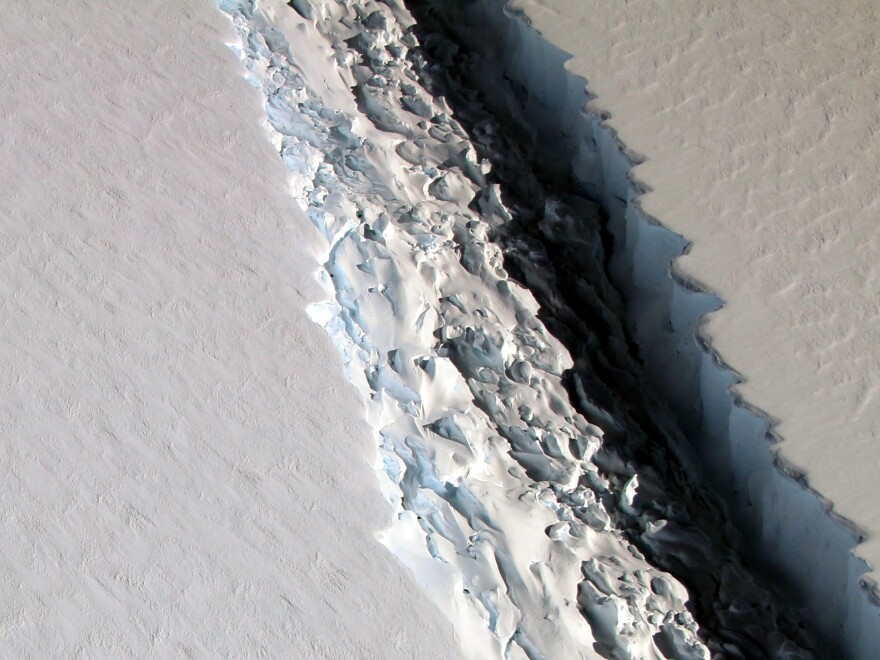A massive iceberg the size of Delaware has broken free from Antarctica and is floating in the sea.
Earlier Wednesday, scientists announced that the 6,000-square-kilometer (about 2,300 square miles) iceberg had come loose, after satellites detected it had calved off the Larsen C ice shelf on the Antarctic Peninsula.
"Put any adjective you like on it: a corker, a whopper — it's a really large iceberg," says , a researcher with the United Kingdom's Centre for Polar Observation and Modelling at the University of Leeds.
"There have been some this big before," says Adrian Luckman, a glaciologist at Swansea University in the U.K. who leads to track changes in the ice shelf. But he adds, the roughly trillion-metric-ton iceberg is unusual. "This is certainly in the Top 10, maybe possibly in the Top 5."
Scientists since a massive crack first opened up in the Larsen C ice shelf back in 2014. The crack grew rapidly, and by the end of last week, a roughly 3-mile sliver of ice was all that connected the iceberg to the shelf.
Hogg says that the breakup, while astounding in size, will not have an effect on global sea levels. That is because this chunk of ice was already floating on water when it broke off. "This is the same as if you've got an ice cube in your gin and tonic," she says. "When the ice cube melts, it doesn't raise the volume of water in that glass."
But the consequences could be significant. The larger Larsen C ice shelf is itself holding back a large volume of "grounded ice." If the entire ice shelf breaks apart, that grounded ice could flow into the ocean, changing sea levels, Hogg says.
Luckman, however, says there is no need for panic: The breakup of the ice shelf, if it happens at all, will take years or even decades. Even then it's unclear how much ice would flow into the sea.

Nor is it clear whether climate change is behind this breakup. Although climate change has been responsible for melting in other parts of Antarctica, such as the Pine Island Glacier, researchers believe the story on the Antarctic Peninsula is more complicated. "Icebergs are calving all the time in Antarctica, and really that forms part of the natural life cycle of any ice shelf," Hogg says.
Researchers will have to continue their studies to find out whether Larsen C is being affected by climate change.
Copyright 2023 NPR. To see more, visit https://www.npr.org.






